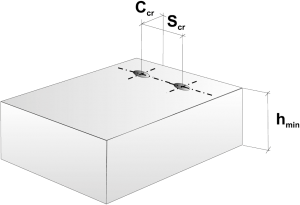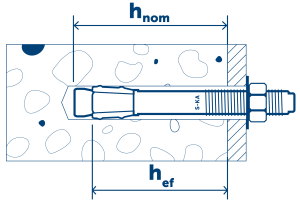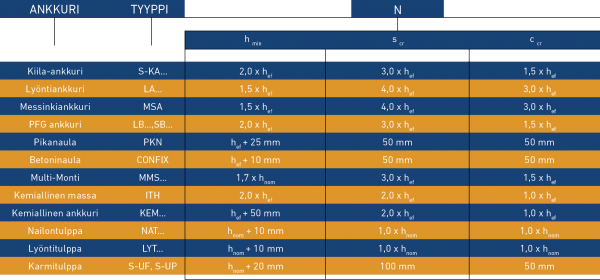Part 5: Be careful when fixing close to the edge of the fixing base
The functioning of several fixing types is based on the friction created by the expansion of the force part of the fixing caused by the tightening of the fixing. If the distance of the fixing from the edge of the fixing base or another fixing is too small, the expansion pressure can cause the base to crack and the fixing to fail. Edge distance refers to the permissible distance of the anchor from the edge of the fixing base (e.g. concrete slab, wall or column). Spacing refers to the permissible distance of fixings installed to the same fixing base from one another.

scr Characteristic spacing
ccr Characteristic edge distance
hmin Minimum thickness of the fixing base
hnom Installation depth
hef Effective installation depth
The permissible load values specified in the technical specifications of the product section are based on tests performed using the distances specified in the table below. If a smaller distance is used, the permissible load also decreases. Unless otherwise specified, the capacities of the fixings presented on the product pages are based on the edge distances and spacings below.
STANDARD EDGE DISTANCES AND SPACINGS
If the spacing or edge distance is smaller than the “characteristic values” (scr/ ccr), new calculations based on each product certification are required. In the case of shear load, the values of the table do not apply to fixings made too close to the edge of concrete. In shear loads too close to the edge (c ≤ 10 x hef), the cracking of concrete must be reviewed based on calculations made based on each product certification. The Sormat TRUSTFIX calculation software is available for download here.












